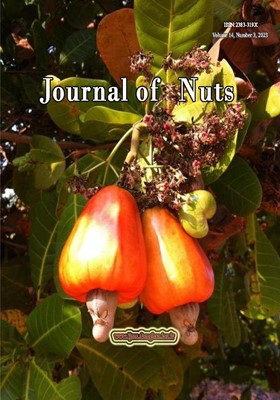Afforestation of the Biosphere Reserve of Iraq with Norway Spruce (Picea abies) and Austrian Pine (Pinus nigra) Seedlings: a Quantitative and Qualitative Study
محورهای موضوعی : Abiotic stress physiology
Kuanysh Syman
1
![]() ,
Ammar Dham
2
,
Ammar Dham
2
![]() ,
Hussein S.H. Ridha
3
,
Hussein S.H. Ridha
3
![]() ,
Ahmed Hazem Salem
4
,
Ahmed Hazem Salem
4
![]() ,
Hayder Abdullah Talib
5
,
Hayder Abdullah Talib
5
![]() ,
Sarah Jaafar Saadoon
6
,
Sarah Jaafar Saadoon
6
![]() ,
Abdulbary Amin Mahuop Ahmed
7
,
Abdulbary Amin Mahuop Ahmed
7
![]()
1 - Institute of Natural Sciences and Geography, Abai Kazakh National pedagogical university, Almaty, Kazakhstan
13, Dostyk Av., 050010 Almaty, the Republic of Kazakhstan
2 - College of education, Medical Lab techniques, Al-Farahidi University, Iraq
3 - Department of Medical Laboratories Technology, AL-Nisour University College, Baghdad, Iraq
4 - Department of Radiology & Sonar Techniques, AlNoor University College, Nineveh, Iraq
5 - National University of Science and Technology, Dhi Qar, Iraq
6 - College of Pharmacy, Al-Ayen University, Thi-Qar, Iraq
7 - Assistant professor of Biology, Institute of Medicine, People’s Friendship University of Russia, Russia
کلید واژه: Pinus nigra, Biosphere reserve of Iraq, Picea abies,
چکیده مقاله :
In the western Iranian provinces of Kurdistan and Kermanshah as well as the northern Kurdistan Region of Iraq, there is a hilly terrain called Hawraman. It’s called the biosphere reserve of Iraq due to its high biodiversity. In this study, the planting of saplings of the Norway spruce (Picea abies) and Austrian pine (Pinus nigra) species was investigated quantitatively and qualitatively using 20 square sample plots with measurements of 12×12 meters that were randomly chosen in the selection area. The diameter of the collar, the overall height, the freshness of the seedlings, and the survival indicators were evaluated and measured in each sample plot. Picea abies outperformed Pinus nigra in terms of diameter and height, according to a statistical comparison between the two species in the same direction and slope (Picea abies: 1.34 cm and 0.32 m, Pinus nigra: 0.71 cm and 0.21 m). There was no significant difference in the percentage of survival between the two species. In terms of freshness, a comparison of these two species revealed that the Picea abies species had a higher level of freshness than the Pinus nigra species.


